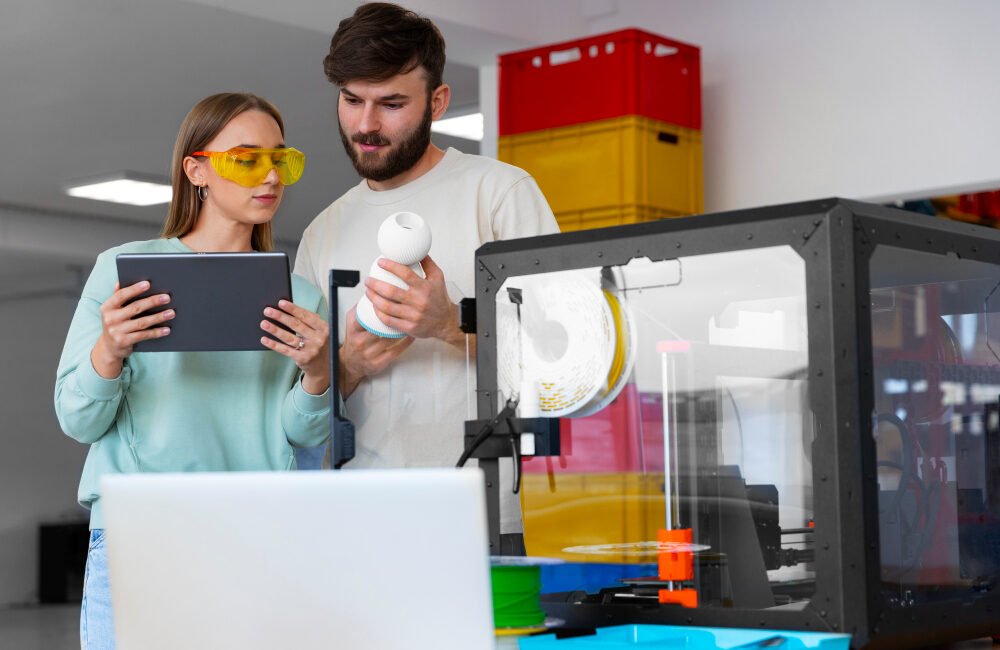
The era of static devices is giving way to a new generation of intelligent, interconnected products. Across industries, items are being infused with sensors, software, and connectivity, transforming them into “smart products.” These devices offer unprecedented functionality, gather valuable data, and provide personalized experiences, fundamentally changing how we interact with technology in our homes, workplaces, and cities. However, creating these sophisticated products involves a journey far more intricate than traditional hardware development.
Successfully bringing a smart product vision to life requires a holistic approach that seamlessly integrates hardware engineering, embedded software development, cloud architecture, robust security measures, and intuitive user experience design. It’s a specialized discipline focused on connected device engineering, where deep expertise is essential to navigate the complexities from initial idea to market-ready reality.
Defining the “Smart” Element
What truly distinguishes a smart product? It’s the synergy between several core layers:
- Hardware: The physical form, housing sensors (to perceive the world), actuators (to act upon it), processing units (MCUs/SoCs to think), and communication interfaces (Wi-Fi, Bluetooth, etc., to talk).
- Embedded Software (Firmware): The dedicated software running directly on the hardware, managing its core functions, interpreting sensor data, controlling actuators, handling network connections, and often performing initial data processing or implementing security protocols.
- Connectivity: The vital link enabling the device to exchange data and commands with other devices, mobile apps, or cloud platforms. The choice of connectivity (e.g., low-power WAN vs. high-bandwidth Wi-Fi) is critical based on the application.
- Cloud Platform/Backend: Often the central hub where data from numerous devices is aggregated, stored, analyzed (frequently using AI/ML algorithms), and managed. It facilitates remote control, updates, and interactions between devices and users.
- User Application: The interface, usually a mobile app or web dashboard, that allows users to monitor status, control functions, view insights derived from the collected data, and manage device settings.
Designing and manufacturing a smart product means flawlessly orchestrating these interconnected layers.
The Integrated Design Lifecycle
Unlike traditional products where hardware and software might be developed in silos, smart product design necessitates constant collaboration:
- Strategy & Conceptualization: It starts with defining the core purpose. What problem does the smart functionality solve? What data is needed? How will it enhance the user experience? What are the security and privacy implications?
- Hardware & Firmware Co-Design: Hardware choices (processor speed, memory, sensor types, battery life) directly impact firmware capabilities and vice-versa. These must be developed in tandem, focusing on efficiency, reliability, and security from the ground up (e.g., secure boot, hardware encryption).
- Connectivity & Cloud Architecture: Designing how the device will securely connect and communicate with the backend. This involves selecting appropriate protocols, designing scalable cloud infrastructure, and defining APIs for data exchange.
- Application & User Experience (UX): Crafting an intuitive and seamless user interface that makes complex smart features easy to understand and control. Good UX is critical for adoption.
- Security by Design: Security cannot be an afterthought. It must be woven into every layer – hardware roots of trust, encrypted communications, secure firmware updates (OTA), robust cloud security, and privacy-preserving app design.
- Prototyping & Iteration: Building and testing functional prototypes is essential to validate assumptions, refine hardware/firmware interactions, test connectivity, and gather user feedback early and often.
Manufacturing Smartness: Beyond Assembly
Manufacturing smart products introduces complexities beyond standard electronics assembly:
- Component Sourcing: Procuring specialized sensors, low-power MCUs, and certified wireless modules requires careful supplier management and planning for potential supply chain volatility.
- Precision Assembly (PCBA): Smart devices often involve densely packed PCBs with miniature components requiring advanced SMT processes and rigorous automated inspection (AOI/X-Ray) to ensure quality.
- Firmware Flashing & Secure Provisioning: Each device needs its firmware securely loaded. More importantly, unique cryptographic keys and device identities must be securely injected (“provisioned”) during manufacturing to enable secure network authentication and prevent counterfeiting.
- Calibration: Devices relying on sensors (environmental, biometric, etc.) need precise calibration on the production line to ensure accuracy in the field.
- Testing – The Multi-Layer Challenge: Testing goes far beyond simple power-on checks. It must validate hardware function, firmware stability, connectivity reliability across different network conditions, cloud communication integrity, application responsiveness, end-to-end security, and Over-the-Air (OTA) update functionality.
Why Partner with Experts like Techwall?
The breadth and depth of expertise required—spanning hardware, embedded systems, RF engineering, cloud computing, mobile development, AI/ML, cybersecurity, global compliance, and supply chain logistics—make smart product development a significant challenge for many organizations.
Collaborating with a specialized design and manufacturing partner like Techwall provides critical advantages:
- Integrated Skillset: Access to a cohesive team covering all necessary disciplines, ensuring seamless integration between hardware, firmware, and software.
- Accelerated Development: Leveraging proven design methodologies, reusable software components, and established manufacturing relationships significantly reduces time-to-market.
- Risk Management: Deep experience in navigating security pitfalls, regulatory compliance hurdles (FCC, CE, RoHS, etc.), and manufacturing quality control helps avoid costly mistakes.
- Scalability: A partner with robust manufacturing capabilities can smoothly scale production from initial prototypes to high-volume runs.
Conclusion: Building the Connected Future
Designing and manufacturing smart products is about creating more than just gadgets; it’s about building connected experiences that add real value to users’ lives. It requires a meticulous, security-conscious, and integrated approach across the entire lifecycle. By embracing this complexity and potentially collaborating with specialized partners, innovators can successfully bring their smart product visions to fruition, contributing to the ever-expanding landscape of our connected world.

